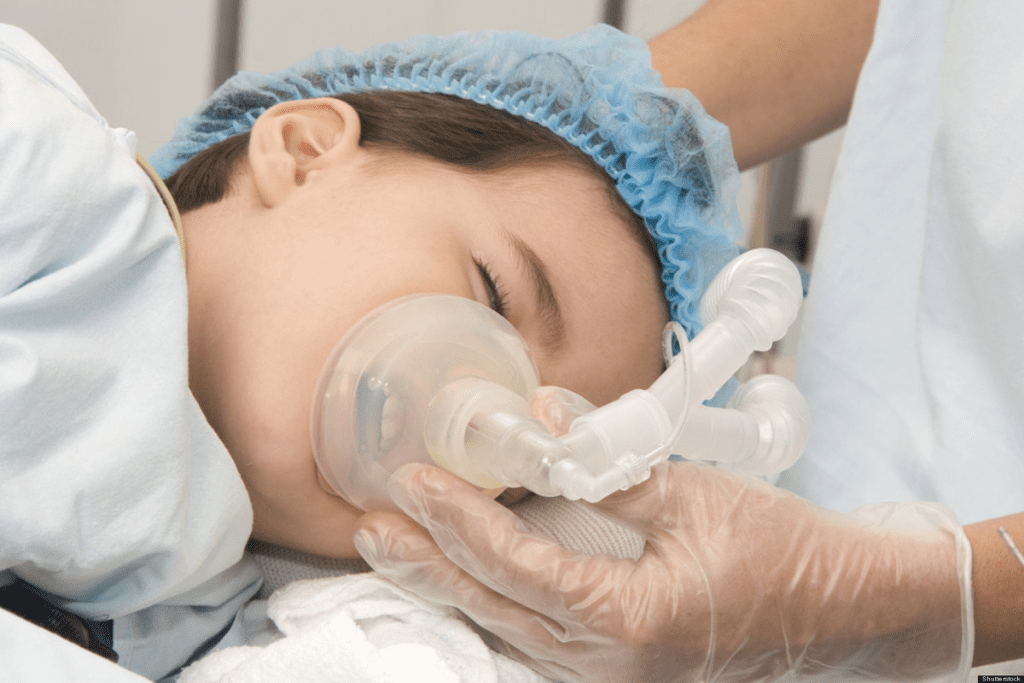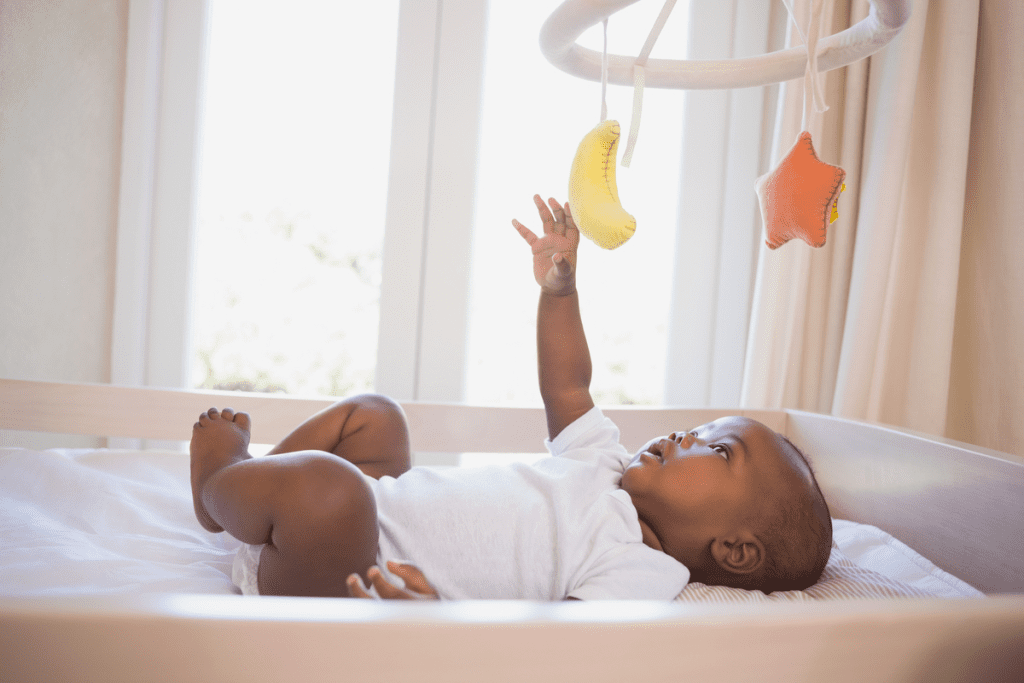Last Updated on November 14, 2025 by
As a parent, the thought of your child getting anesthesia can be scary. At LivHospital, we get your worries and aim to give you the latest info and care about anesthesia side effects to keep your child safe and comfortable.
Recent studies have looked into how anesthesia might affect early childhood growth. This might worry you, but we’re here to help you understand. We want to make sure your child is safe and well.

We know keeping your child safe during anesthesia is key. Our team works hard to give top-notch care and support. We answer your big questions like “Is anesthesia safe?” and “What does anesthesia do?”
Anesthesia’s impact on kids’ brains is a big worry for parents and doctors. We at our healthcare center keep up with the latest on anesthesia and its effects on child development. Research shows that anesthesia can affect developing brains. Kids might be more at risk because their brains are still growing.
Anesthesia stops brain cells from working, which can change young brains. Studies reveal that general anesthesia can alter brain structure and function. This is especially true for areas that handle learning and memory. Knowing how anesthesia side effects affect young brains is key to reducing risks.
Kids under 4 are especially sensitive to anesthesia because their brains are growing fast. Research shows that kids who had anesthesia before age 4 were 17% more likely to face developmental challenges. The type of anesthetic, how long it’s used, and how often it’s given can all affect a child’s sensitivity.
Medical professionals know anesthesia is crucial but also its side effects on kids. It’s usually safe, but research shows it might affect kids’ growth. Liv Hospital focuses on each child’s needs.

Research links young anesthesia use to cognitive changes. Children under 4 exposed to anesthesia face cognitive challenges. Our team watches for these issues in kids who’ve had anesthesia.
Studies show kids under 4 exposed to anesthesia might struggle in reading and math. This is a worrying trend. We help parents and teachers support these kids.
Anesthesia might change kids’ behaviour, like making them more anxious or ADHD-like.
“Anesthesia exposure has been associated with altered behavioral patterns in children, highlighting the need for careful monitoring and support.”
Our team helps with these behavioural changes and guides families.
Executive function, like planning, is key for kids. Research shows anesthesia might affect it in some. We support kids’ executive function skills after anesthesia.
Knowing anesthesia’s side effects helps us care for kids better. At Liv Hospital, we aim for top-notch care for every child.
Recent studies have shown potential risks of anesthesia in children. This gives us insights for parents and healthcare workers. We look into how anesthesia impacts child development through the latest research.
Many studies have looked at anesthesia’s effects on children’s development. At Liv Hospital, we keep up with the latest medical knowledge. This helps us give the best care to our patients.
Studies suggest a 17% higher risk of developmental delays in children exposed to anesthesia. It’s important to understand this statistic in context. We analyze these numbers to help parents grasp the potential risks for their child.
Anesthesia duration varies by procedure and individual factors. Knowing how long anesthesia lasts is key to assessing its impact on child development.
The PANDA and GAS studies are key to understanding anesthesia’s effects on children. The PANDA study looked at children after a single anesthesia exposure for inguinal hernia repair. The GAS study compared awake-regional anesthesia with general anesthesia in infants.
These studies give us valuable data on anesthesia’s developmental implications. By examining their findings, we can better understand anesthesia’s risks and benefits in children.
A 2022 meta-analysis of 31 studies found anesthesia linked to more behavioural problems and executive function impairments in children. This review gives us a strong understanding of anesthesia’s effects on child development. It highlights the need to carefully consider anesthesia’s benefits and risks in pediatric care.
At Liv Hospital, we are dedicated to keeping up with the latest research. This helps us provide the best care for our patients. By understanding these studies, we can help parents make informed decisions about their child’s treatment.
Several key factors determine how anesthesia affects children’s development. It’s essential to understand these elements. At Liv Hospital, we use the latest advancements in medical care to ensure the best outcomes for our young patients.
The age at which a child is exposed to anesthesia is critical. Research shows that children under 4 may be more vulnerable to anesthesia’s effects on their developing brains. It’s crucial for parents to discuss the timing of any necessary surgical procedures with their healthcare provider.
Duration and Frequency of Anesthesia
The duration and frequency of anesthesia exposure are significant factors. Longer or repeated exposures to anesthesia may have different impacts compared to a single, short exposure. Our medical team carefully evaluates the need for anesthesia and strives to minimize exposure whenever possible. The key factors include:
Different anesthetic agents may have varying effects on children’s developing brains. At LivHospital, we stay updated on the latest research and guidelines to choose the safest anesthetic agents for our young patients. The type of anesthetic used can impact the risk profile, and our anesthesiologists are trained to select the most appropriate agents.
We continually update our protocols to minimize risks associated with anesthesia in children. This includes using advanced monitoring techniques and adjusting anesthesia plans based on individual patient needs. Our commitment is to provide the highest level of care while minimizing potential developmental risks. Some of the measures we take include:
By understanding and addressing these critical factors, we can better ensure the safe use of anesthesia in children. At Liv Hospital, our goal is to provide world-class care that balances medical necessity with developmental concerns.
Understanding how anesthesia affects children’s development is key. At Liv Hospital, our team works hard to offer top-notch care. We make sure to balance the need for medical procedures with the importance of a child’s growth.
We know that anesthesia is often needed for many treatments. Yet, we also consider the side effects of anesthesia. Our goal is to give our young patients the best care possible.
We keep up with the latest research and use the latest methods to reduce risks. Our team knows how anesthesia can affect a child’s brain. We take all steps to lessen any negative effects. We believe that, in most cases, anesthesia is safe when given by skilled professionals.
We want to support and guide families through the challenges of medical care. Our aim is to help our young patients get the best medical treatment and support their growth.
Anesthesia is a treatment that stops patients from feeling pain during surgery. It blocks nerve signals to the brain. This keeps patients comfortable and pain-free during the procedure.
Anesthesia is usually safe when given by skilled professionals. But, like any treatment, it can have risks and side effects, especially in kids.
Yes, anesthesia can lead to constipation in some patients. It slows down bowel movements. Our team considers this when caring for patients after surgery.
Anesthesia’s length depends on the procedure, patient health, and anesthetic agents. Our team will guide you on what to expect during recovery.
General anesthesia can cause nausea, vomiting, and drowsiness. Kids may face extra risks, which we monitor and address.
General anesthesia is usually safe, but there are risks for kids under 4. Our team takes a careful and personalized approach to reduce these risks.
Working with our experienced team can help reduce anesthesia risks. We’ll discuss how your child’s age, procedure, and anesthetic agents affect their care.
At LivHospital, we use advanced protocols to reduce risks. Our team stays updated with research and uses proven practices for the best outcomes in young patients.
Subscribe to our e-newsletter to stay informed about the latest innovations in the world of health and exclusive offers!